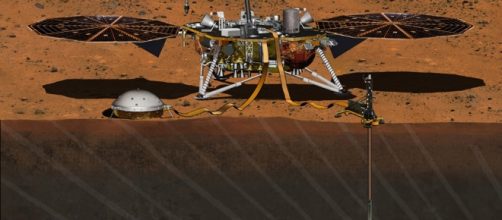NASA´s Interior Exploration Using Seismic Investigations, Geodesy and heat Transport (InSight) is the first mission intended to perform geology studies of Mars´ deep interior. Its principal objective is to broaden the understanding of the way in which rocky planets have evolved over time. Using advanced geophysical instruments, InSight will perform seismological, temperature and precision tracking measurements.
Mars´interior exploration
Earlier missions have already studied the surface features of Mars, including, volcanoes, soil, canyons, and craters; however, no spacecraft has been designed to study its deep interior.
Mars has been less active geologically than earth; therefore, it does not have plate tectonics on its surface, as a consequence, its record history-core, mantle and crust-may provide basic planetary information about its evolution.
Insights into the evolution of rocky planets
The study of Mars´ core, mantle, and crust and the densities and temperatures within these structures may provide clues of the processes of evolution of the four rocky planets in the solar system. Mars is the right size to have undergone the primordial heating and differentiation stages that have given shape to all the rocky planets. It´s also the right size to have recorded these processes over its entire age (4.6 bison years).
Objectives
Insight mission main objective is to gain an understanding of the evolution of rocky planets -- Mercury, Venus, Earth, and the red planet.By studying Mars´ internal structure and the processes of formation. The mission will also research the tectonic activity and meteorite impacts. All information gathered in relation to these investigations may offer new insights into related processes on Earth and other rocky planets.
Lander´s instruments
This mission will carry the Seismic Experiment for Interior Structure (SEIS) and the Heat Flow and Physical Properties Package (HPPP). These instruments will measure the internal activity, temperature and the movement variations of the planet due to the gravitational pulls of the sun and its moons.
The Rotation and Interior Structure Experiment (REIS) will rely on the spacecraft communication system to obtain detailed planetary rotation data.
A camera, similar to the Navcam cameras on the Spirit and Opportunity rovers, mounted on the arm of this Lander will capture a 3D view of the science instruments dispaced on the ground and will also help capture black and white images of the equipment on the lander´s deck.
All of these data obtainedwith the science instruments will help scientists understand Mars´ interior structure and processes and the forces that shaped the other rocky planets in the solar system.

